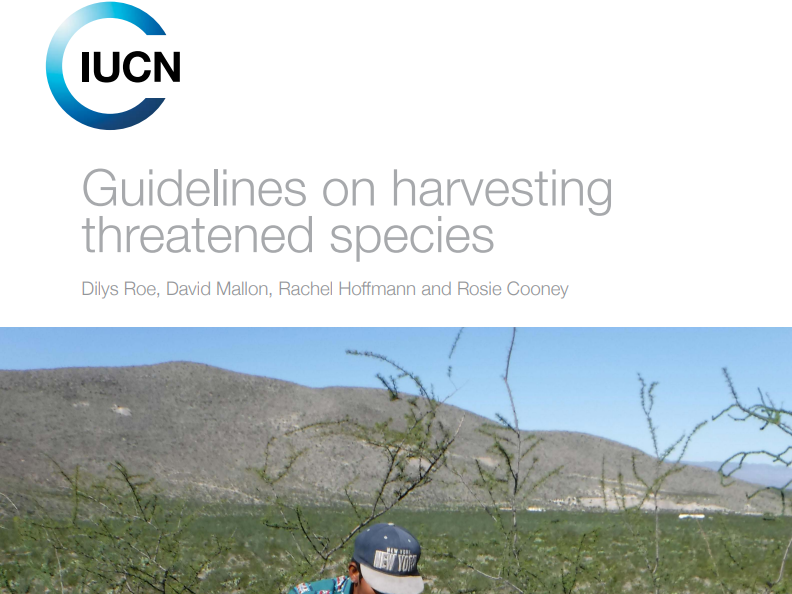
1. Societies around the globe harvest wild species, to a greater or lesser extent, for food, building materials, healthcare, medicines, pest control, ornamentation, income, recreation, and cultural and spiritual purposes. While this use of wild species directly contributes to the well-being of billions of people globally, over-exploitation of wild species is one of the key drivers of biodiversity loss. It is therefore critical to ensure that use of wild species is sustainable – both to reverse the global trend in biodiversity decline and also to ensure that wild species continue to provide the benefits on which so many people depend.
2. While the harvesting of all species requires careful management to ensure it is sustainable, harvesting of threatened species requires particular care because of the heightened risk of extinction of these species. These guidelines are intended to support decision-making in providing that care.
3. Harvesting is best described as the process of collecting, cutting, taking, or killing of wild species or their parts and/or derivatives. It encompasses hunting and collecting terrestrial animals, gathering terrestrial plants, logging and wood harvesting, fishing and harvesting aquatic resources.
4. Threatened species are those that fall into the categories of Vulnerable, Endangered or Critically Endangered on the IUCN Red List of Threatened SpeciesTM.
5. Threatened species may be affected directly or indirectly by harvesting. The full scale and impacts of harvest on threatened species are impossible to assess because use of wild species can be unregulated, unmonitored and/or illegal – and therefore undocumented or unknown. Furthermore, many species which are harvested have not yet had their conservation status assessed but may well be threatened. Nonetheless, some threatened species, even those in the highest category of threat, have been shown to be capable of supporting a carefully regulated sustainable harvest that both benefits conservation of the species and provides financial or other incentives for local communities and for conservation management.












